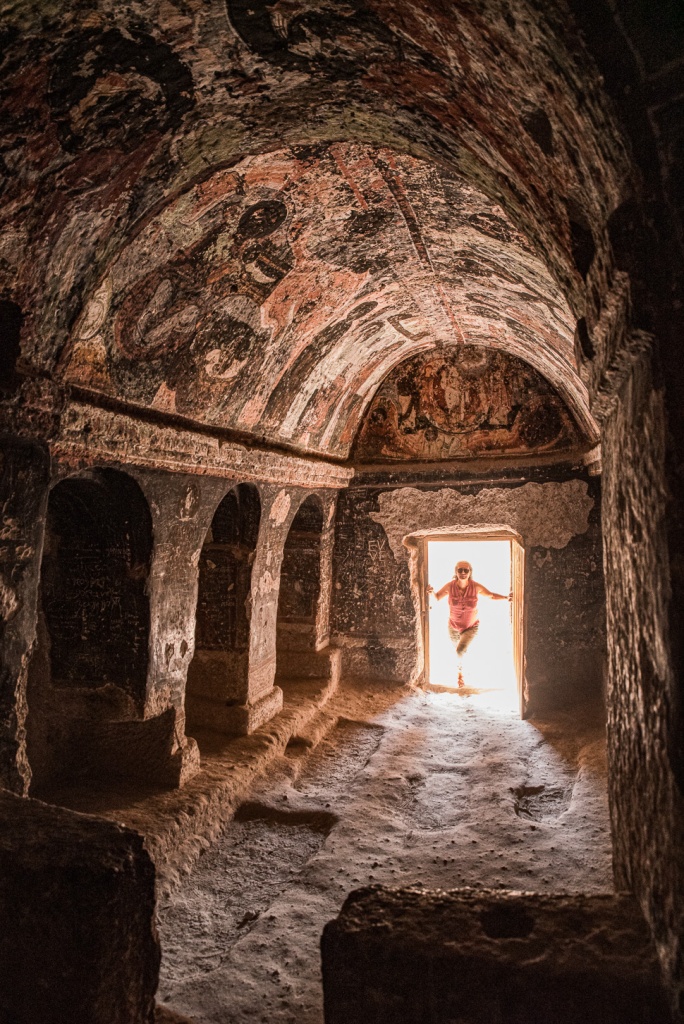On our way to Soganli, we did some shopping in Ortahisar, where we also climbed the 90-metre-high rock-castle in the centre of the town, an extraordinary example of the rock-cut architecture typical of the region. The rock-castle has served as a refuge from attackers in Byzantine times and the climb was an interesting experience, which rewarded us with a great view.


We drove south through the Damsa Valley and stopped at the Keslik Monastery, a sprawling cave monastery complex with two churches, a large refectory hall, a sacred spring, and endless cave rooms, located in an idyllic garden setting.

The first church was built around 900 AD, as part of an early Christian settlement. A large expansion occurred in the early 1200s. Later it was abandoned and reused a couple of times. The frescos in the church are very blackened and only with a torch you can make out the colourful figures. The old man showing us the frescos told us, that in autumn they will start to restore the frescos. Afterwards, this church will be even more a highlight of Cappadocia.




We continued to the valley of Soganli, where we went to explore more churches, but also saw many pigeonries and finally got confirmed what the holes in the ground inside so many caves were used for – to make bread! At the hidden apple garden, we had a wonderful lunch under the shade of the trees with a lovely host, who spoke many languages.





At the remains of the old town of Soganli, the Turkish television was shooting a film. Beside of the camera crew, we also met some of the actors in traditional costumes.









We first wondered about this little windows, but a little bit of research, and we found out, that it were pigeonries. The white colour around the windows protects the pigeons from nest robbers, because the surface is more slick than the rock. Once a year, the villagers would open the pigeonries and use the bird dung as a fertilizer at the fields.

We spent the night at the end of the road into the valley at a parking, which we had to ourselves. At night, the rock formations and caves were lit in rapidly changing colours like a bad Christmas decoration.
We will make our way now west from here, in the direction of the Ihlara valley.
